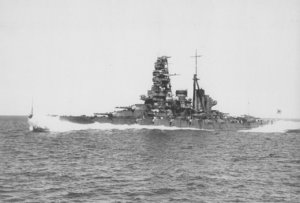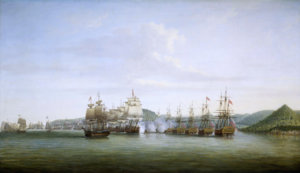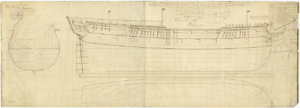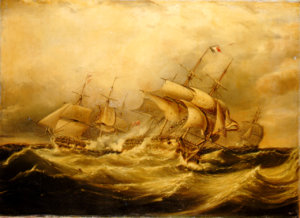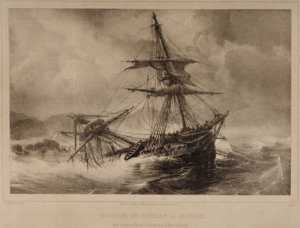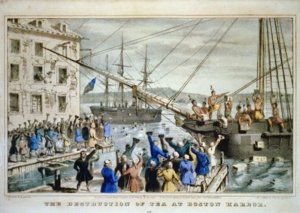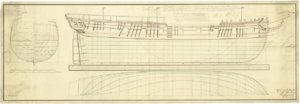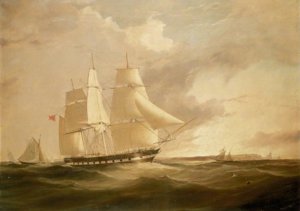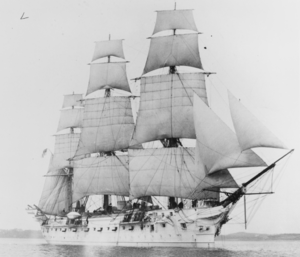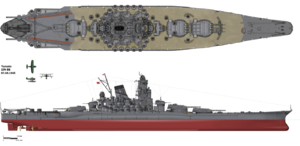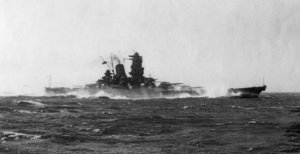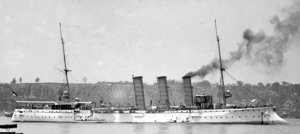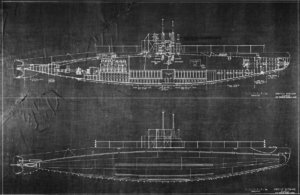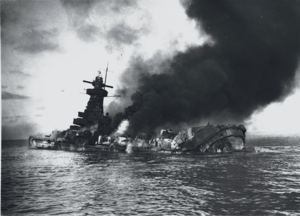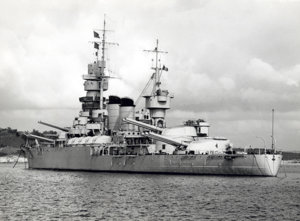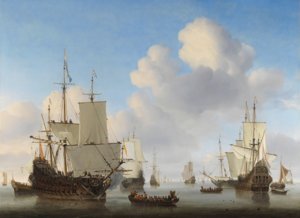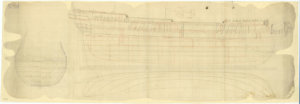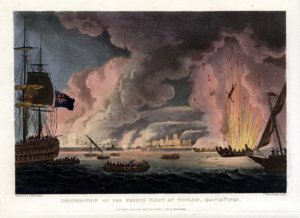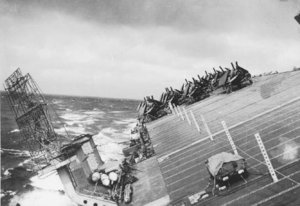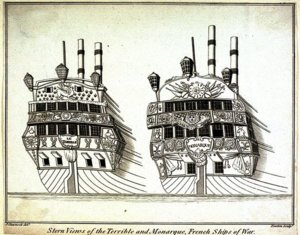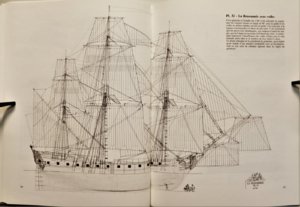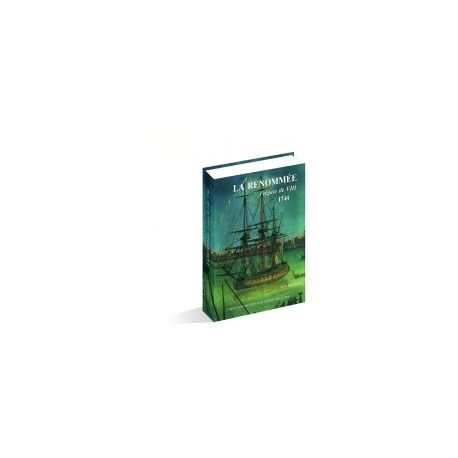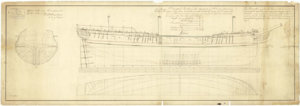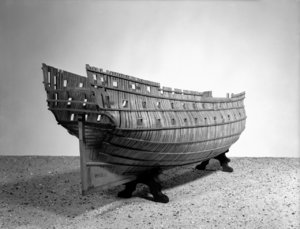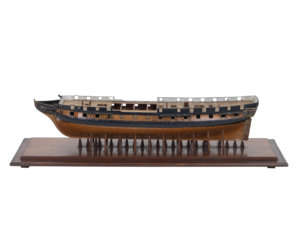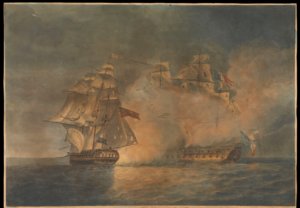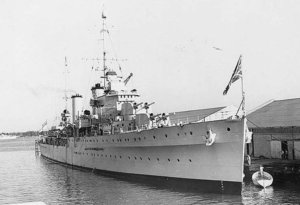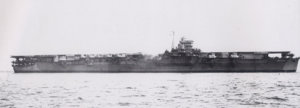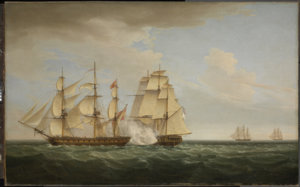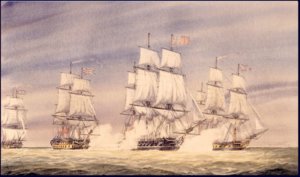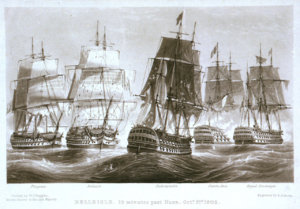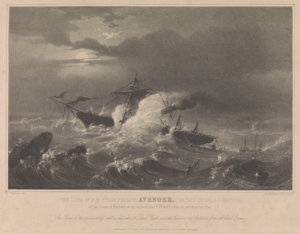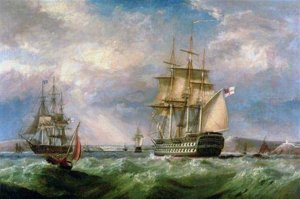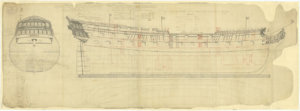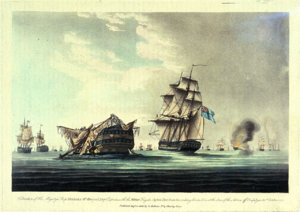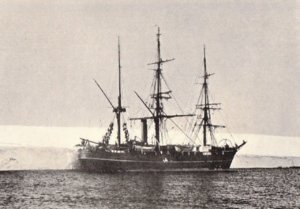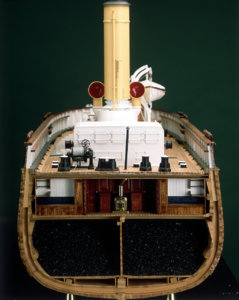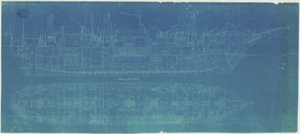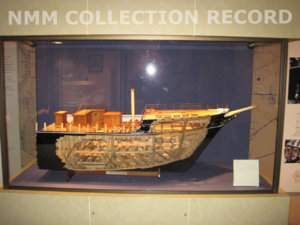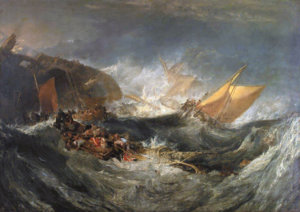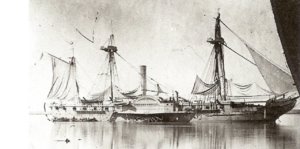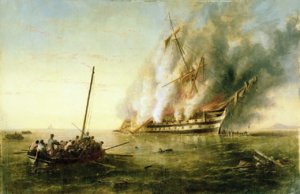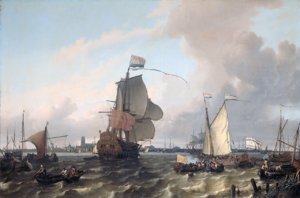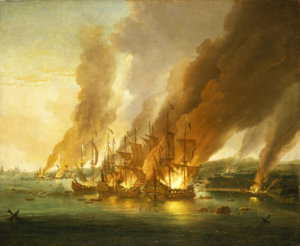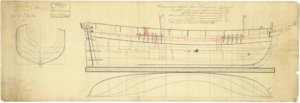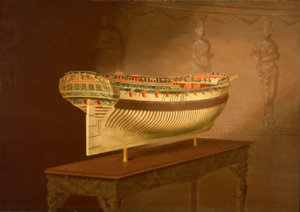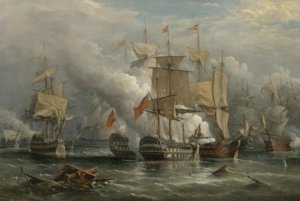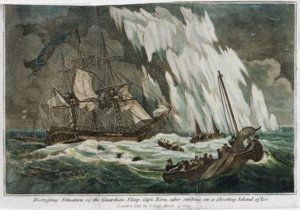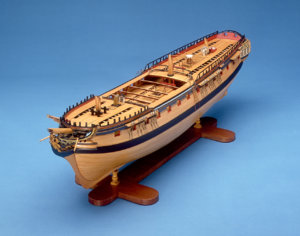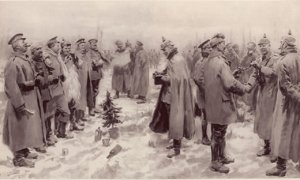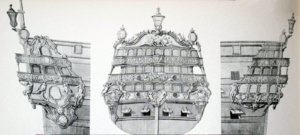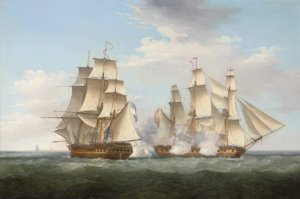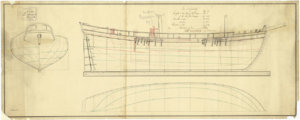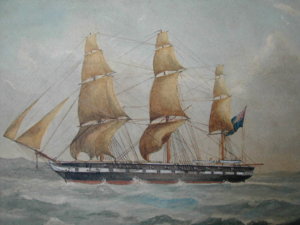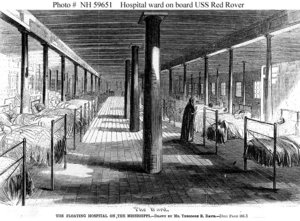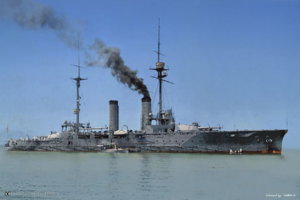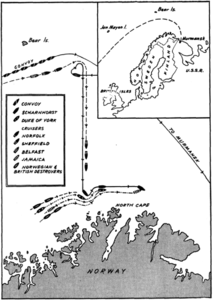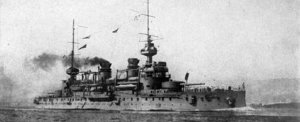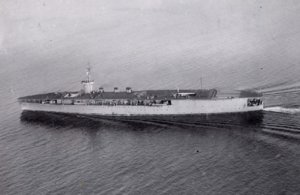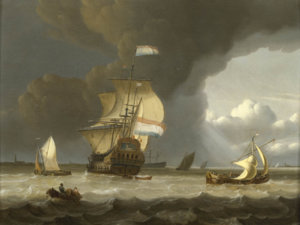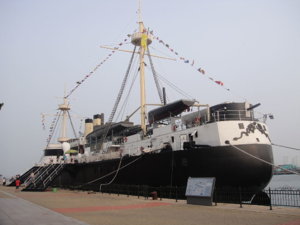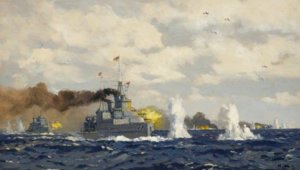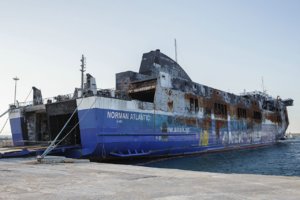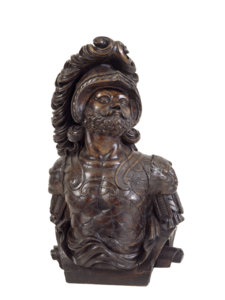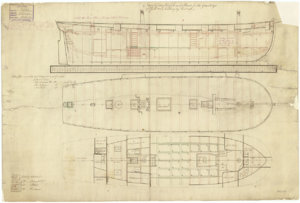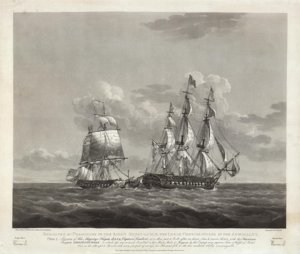Today in Naval History - Naval / Maritime Events in History
14th of December
please use the following link and you will find the details and all events of this day .....
Today in Naval History - Naval / Maritime Events in History 13 December 1693 - Death of Willem van de Velde the Elder Because of painters like him, we know now, how these ships were looking like Willem van de Velde the Elder (c. 1611 – 13 December...
shipsofscale.com
1600 - The galleon San Diego, built as the trading ship San Antonio, sunk
The galleon
San Diego was built as the trading ship
San Antonio before hastily being converted into a
warship. On December 14, 1600, the fully laden
San Diego was engaged by the Dutch warship
Mauritius under the command of Admiral
Olivier van Noort a short distance away from
Fortune Island,
Nasugbu,
Philippines. Since
San Diego couldn't handle the extra weight of her cannons, which led to a permanent list and put the cannon portholes below sea level, she was sunk without firing a single shot in response. The Dutch were later reported firing upon and hurling lances at the survivors attempting to climb aboard the
Mauritius.
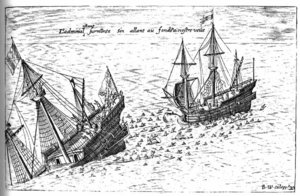 1758 - Launch of HMS Resolution, a 74 gun Dublin class ship of the line
1758 - Launch of HMS Resolution, a 74 gun Dublin class ship of the line
HMS Resolution was a 74-gun
third rate ship of the line of the
Royal Navy, launched on 14 December 1758 at
Northam.
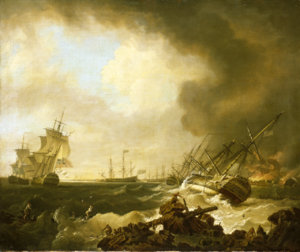
The French
Soleil Royal and
Héros are in flames on the right,
in the foreground HMS Resolution lies wrecked on her starboard side. In front of her is HMS
Essex, with other members of the British fleet at anchor in the background. The captured French
Formidableis attended by a British frigate on the left of the picture.
1775 – Birth of Thomas Cochrane, 10th Earl of Dundonald, Scottish admiral and politician (d. 1860)
Admiral Thomas Cochrane, 10th Earl of Dundonald, Marquess of Maranhão,
GCB,
ODM,
OSC (14 December 1775 – 31 October 1860), styled
Lord Cochrane between 1778 and 1831, was a British naval
flag officer of the
Royal Navy, mercenary and
radical politician. He was a daring and successful
captain of the
Napoleonic Wars, leading
Napoleon to nickname him
Le Loup des Mers ('The Sea Wolf'). He was successful in virtually all his naval actions.
 1798 - Action of 14 December 1798
1798 - Action of 14 December 1798
French 24 gun Bayonnaise captured 32-gun HMS Ambuscade
The
Action of 14 December 1798 was a naval skirmish between the 32-gun British frigate
HMS Ambuscade and the French 24-gun corvette
Bayonnaise.
Bayonnaise was vastly outgunned and outmanoeuvred, but was able to board and capture
Ambuscade.
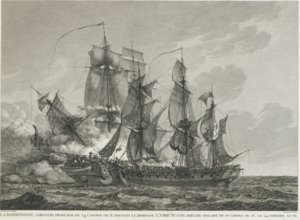


 1814 - British squadron, under Admiral Cochrane, captures U.S. gunboats, under Lt. Jones, in Battle of Lake Borgne, LA.
1814 - British squadron, under Admiral Cochrane, captures U.S. gunboats, under Lt. Jones, in Battle of Lake Borgne, LA.
The
Battle of Lake Borgne was a battle between the
Royal Navy and
Royal Marines on one side and the
U.S. Navy and
U.S. Marines on the other in the American South theatre of the
War of 1812. It occurred on December 14, 1814 on
Lake Borgne, and allowed the British to assault New Orleans ten days later.
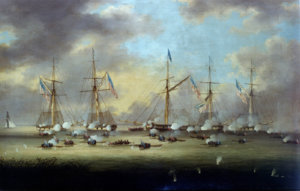 1907 – The Thomas W. Lawson, the largest ever ship without a heat engine, runs aground and founders near the Hellweather's Reef within the Isles of Scilly in a gale. The pilot and 15 seamen die.
Thomas W. Lawson
1907 – The Thomas W. Lawson, the largest ever ship without a heat engine, runs aground and founders near the Hellweather's Reef within the Isles of Scilly in a gale. The pilot and 15 seamen die.
Thomas W. Lawson was a seven-masted, steel-hulled
schooner built for the Pacific trade, but used primarily to haul
coal and
oil along the East Coast of the
United States. Named for copper baron
Thomas W. Lawson, a Boston millionaire, stock-broker, book author, and President of the Boston
Bay State Gas Co., she was launched in 1902 as the largest schooner and largest sailing vessel without an auxiliary engine ever built.
Thomas W. Lawson was destroyed off the uninhabited island of
Annet, in the
Isles of Scilly, in a storm on December 14, 1907, killing all but two of her eighteen crew and a harbor pilot already aboard.
Her cargo of 58,000 barrels of light paraffin oil caused perhaps the first large marine oil spill.
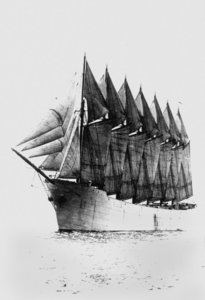 1913 – Haruna, the fourth and last Kongō-class ship, launches, eventually becoming one of the Japanese workhorses during World War I and World War II.
Haruna
1913 – Haruna, the fourth and last Kongō-class ship, launches, eventually becoming one of the Japanese workhorses during World War I and World War II.
Haruna (榛名) was a warship of the
Imperial Japanese Navy during
World War I and
World War II. Designed by the British naval engineer
George Thurston and named after
Mount Haruna, she was the fourth and last
battlecruiser of the
Kongō class, amongst the most heavily armed ships in any navy when built.
Laid down in 1912 at the
Kawasaki Shipyards in
Kobe,
Haruna was formally
commissioned in 1915 on the same day as her sister ship,
Kirishima.
Haruna patrolled off the Chinese coast during World War I. During gunnery drills in 1920, an explosion destroyed one of her guns, damaged the
gun turret, and killed seven men. During her career,
Haruna underwent two major reconstructions. Beginning in 1926, the Imperial Japanese Navy rebuilt her as a
battleship, strengthening her armor and improving her speed and power capabilities. In 1933, her superstructure was completely rebuilt, her speed was increased, and she was equipped with
launch catapults for
floatplanes. Now fast enough to accompany Japan's growing carrier fleet,
Haruna was reclassified as a
fast battleship. During the
Second Sino-Japanese War,
Haruna transported
Imperial Japanese Army troops to mainland China before being redeployed to the Third Battleship Division in 1941. On the eve of the Japanese attack on
Pearl Harbor, she sailed as part of the Southern Force in preparation for the
Battle of Singapore.
